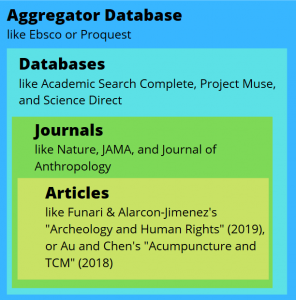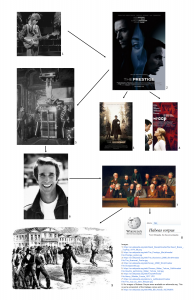Right now we (society) are in a little bit of trouble over the proliferation of information. Specifically, how easy it is to produce and share information.
Widely shared information can be deeply influential, which is why some people choose to spread misinformation, which is information that’s either misleading or just incorrect. Sometimes we share misinformation on social media because it confirms our biases (yes, we all have biases even if we think we’re perfect, fact-based beings) or because it seems like a news flash—it’s new! We should share it! The people must know!!
But sharing misinformation a) makes us look silly and b) contributes to a misinformed world whose information is derived not from facts but opinions and half-truths. Which is bad.
So what can you do to make sure the information you’re consuming, producing, and sharing is factual? One tactic is called “lateral reading.”
We’ve all done lateral reading before, we do it all the time. Have you ever had a million tabs open in your browser at once? Whatever you’re reading (a BuzzFeed article, a Wikipedia page, maybe a newspaper article) sparked some curiosity before you were finished with it, so you right clicked a link and opened a new tab that you would get to later. That’s a part of lateral reading.

Another part, the most fact-checkey part, is when you’re reading something online and you spark your own curiosity. If you’re reading a website and you think “who wrote this?” so you open a new tab, google the website’s name and maybe the phrase “ownership,” and then you get results from different websites.

One result you’ll likely see is the original site’s “About Us” page. This is fine to read, but if I was intent on making readers believe I was a magical typing unicorn, I would not tell you on my About page that I’m really a human. So About Us is fine, but you have to know that your source is honest and altruistic which is a lot to buy into.
Other things that might pop up on your results page are a Wikipedia page about the website or it’s parent company. Check that out, see if there’s a page on the founder or a board of directors. Google them—are they all in an underground anti-unicorn coven? Maybe don’t trust what they have to say about unicorns if that’s the case.
If you google a company or organization or website, don’t forget to scroll past the first few results. If, for example, you googled “immigration statistics” and saw something from the Center for Immigration Studies (which is a .org site*), you’ll get into their website and see that it looks legit. It’s not some crazy black background with green font and pop up adds for singles near you, it looks respectable. It even says on the top of the website “low-immigration, pro-immigrant” which seems like almost a nice thing to say.
So next we google “center for immigration studies” and if we scroll down just a bit, we see a link from the Southern Poverty Law Center (SPLC). Clicking that tell us that the SPLC has actually listed the Center for Immigration Studies (CIS) as a hate group. Go back to our results page on Google and check out the link from PolitiFact (a non-profit fact checking website) and we see they lay out all of the facts of the CIS and SPLC debate and allow the readers to decide what they think for themselves. So you can go back and use that CIS information now if you still think it’s appropriate, but you’ll be forewarned that a professor might ask you to defend your use of that source.
Other questions to ask yourself while reading might be “is that true?” “who collected that data?” “who funded that research?” “what do other sources say about this?” These can all lead you to search and read laterally to make sure you’re fully aware of the context of what you’re reading.
And this works not just when you’re looking up information, but when information passively flies by you on social media or in the news. Fact check information before sharing it by googling authors, checking dates, and using your critical thinking skills.
Lateral reading is a way for us to make sure we understand not just the content of our sources, but their potential biases too. If we know a source is biased, we might choose not to use it or maybe we make an effort to get an equal and opposite opinion to inform our own stance on an issue. It can be difficult to do, but it’s worth it to make sure we’re contributing to a well-informed, conscientious, and empathetic society.
So that’s lateral reading! Open as many tabs as you want, google everything, and keep asking questions!
—————————————–
*For a long time, people espoused the belief that .org sites are more reliable than .com sites. That might have been true once, but it isn’t anymore. Anyone can purchase a .org domain, just like they can purchase a .com domain. We can still have a little more faith in .gov or .edu sites, but only in the sense that we really know who is producing them. Just because a .edu or .gov site says something, doesn’t mean it’s true—it just means we know with confidence who is saying it.
Fun tip for limiting your google searches to just .gov or .edu sites: if you add the phrase “site:.gov” or “site:.edu” into your search, you’ll only see results from those domains.
Emily Metcalf
Instructional Services Librarian
Magical Typing Unicorn 🦄


